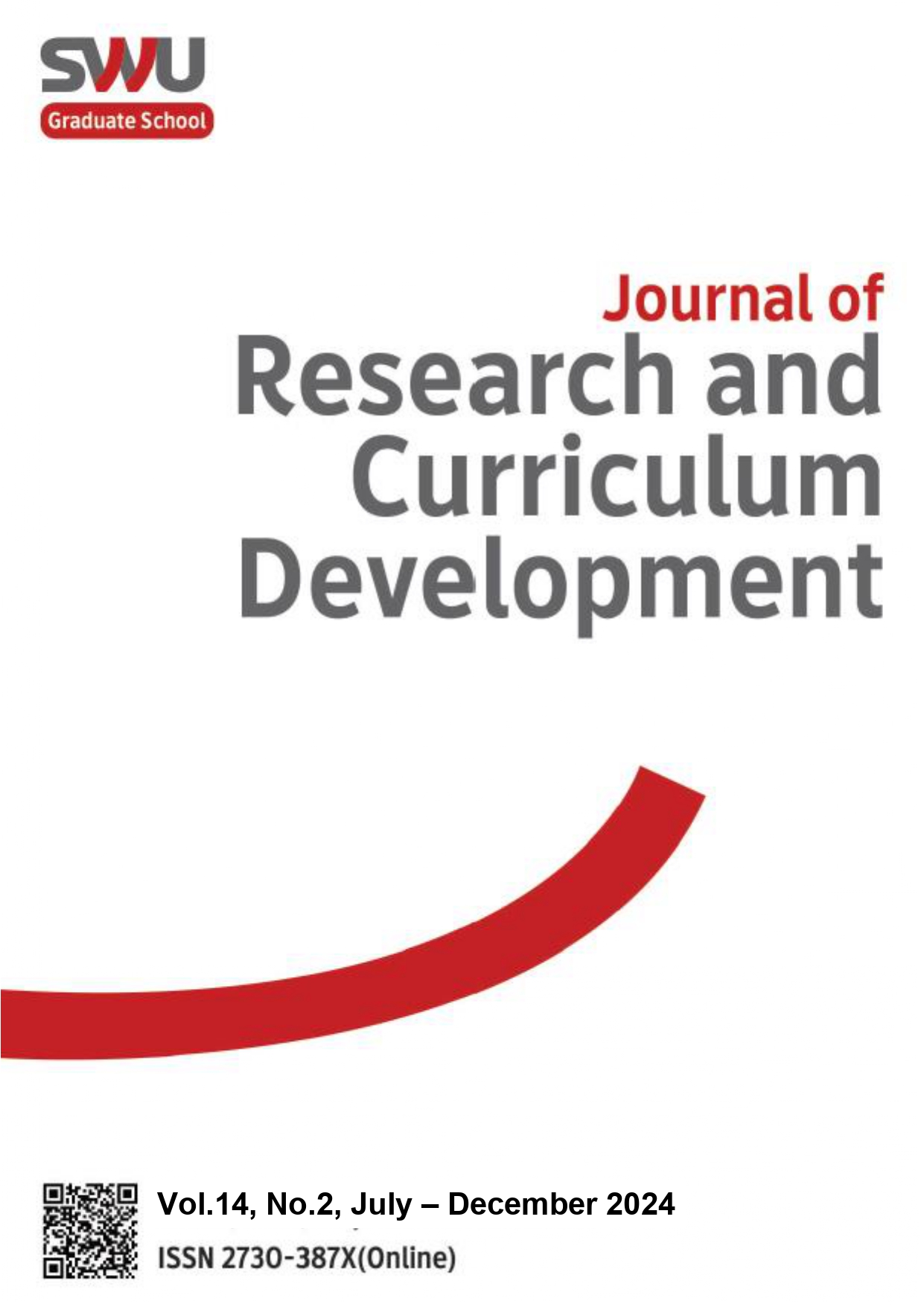Development of Learning Management Model Through Participative Reflection to Enhance Critical Thinking of Nursing Students
Keywords:
Critical thinking, Learning management model, Nursing students, Participative, Reflective learningAbstract
The research aimed to develop a reflective learning model to enhance nursing students' critical thinking skills. The goals were to create the model, evaluate its effectiveness, and monitor the transfer of reflective learning. The study had four phases: identifying problems in reflective learning, developing the model, evaluating its effectiveness, and transferring the learning. The sample group consisted of experts in the field of nursing reflection, teachers responsible for the nursing curriculum, and nursing students. The tools used to collect data were: 1) a questionnaire on current problems regarding students' critical thinking abilities; 2) an assessment of critical thinking ability; 3) an assessment of reflective behavior; and 4) an assessment of satisfaction with learning management. We analyzed the data using mean, standard deviation, T-test, and content analysis. Results: 1. The results revealed that nursing students had problems with critical thinking at a moderate level (= 3.48, standard deviation = 0.56).; as a result, reflective learning should be integrated into the curriculum to enable nursing students to think critically. 2. The development of reflective learning model consisted of five steps: 1) activity preparation; 2) introduction; 3) virtual simulation activity implementation; 4) reflection and learning summary; and 5) evaluation. 3. After the implementation of the model, the nursing students demonstrated discrepancy in critical thinking skills before and after the experiment significantly at the 0.05. 4. The results of the follow-up on the transfer of the reflective learning revealed three key issues: 1) applying the knowledge to patients in real-life situations; 2) solving real problems; and 3) gaining confidence in providing quality patient care. Conclusion: Managing learning through reflection encouraged nursing students to think critically and solve problems in nursing practice.
References
Alden, K., & Durham, C. (2012). Integrating reflection in simulation: structure, content, and process. Chapter 8 in Sherwood, G. and Horton-Deutsch, S. (2012) (Eds.) Reflective Practice: Transforming Education and Improving Outcomes. Indianapolis, US: Sigma Theta Tau International.
Armstrong, G., HortonDeutsch S., & Sherwood, G. (2017). Reflection in clinical contexts: learning collaboration and evaluation. In Horton-Deutsch S, Sherwood GD. (Eds) Reflective Practice: Transforming Education and Improving Outcomes. Indianapolis: Sigma Theta Tau International.
Chettha, K., Arunyabundhum, O., Lalalana, P., & Sophitsiri, Y. (2014). Opinions of students towards writing reflective journals. Journal of Nursing and Education, 7(3), 101-112. (In Thai)
Cronbach, L. J. (1951). Coefficient alpha and the internal structure of tests. Psychometrika, 16(3), 297-334.
Henriksen, D., Richardson, C., & Mehta, R. (2017). Design thinking: A creative approach to educational problems of practice. Thinking Skills and Creativity, 26, 140-153. https://doi.org/10.1016/j.tsc.2017.10.001
Johns, C. (2017). Becoming a reflective practitioner. John Wiley & Sons.
Johns, C. (2000). Becoming a Reflective Practitioner. London: Blackwell Science.
King Prajadhipok's Institute. (2018). Public participation. Bangkok: King Prajadhipok's Institute.
Rujirachai, M., & Chirawan, W. (2019). Instructional management to promote nursing students' ability to transfer learning in clinical practice. Journal of Nursing and Community, 13(1), 23-34. (In Thai)
Ryan, R. M., & Deci, E. L. (2000). Self-determination theory and the facilitation of intrinsic motivation, social development, and well-being. American psychologist, 55(1), 68.
Sarinya, M. (2019). Development of critical thinking skills in the 21st century. MCRNU Journal, 3(2), 105-122. (In Thai)
Sasima, S. (2019). "VUCA World: Challenges for New Leaders". Retrieved from
https://www.sasimasuk.com/16768188/vuca-world, April 17, 2020.
Teekman, B. (2000). Exploring reflective thinking in nursing practice. Journal of Advanced Nursing, 31(5), 1125-1135.
Trail Ross, M.E., Otto, D.A., & Helton, A.S. (2017). Benefits of simulation and role-playing to teach performance of functional assessments. Nursing Education Perspectives, 38(1), 47-48.
Vizeshfar, F., Dehghanrad, F., Magharei, M., & Sobhani., S. (2016). Effects of applying role-playing approach on nursing students' education. International Journal of Humanities and Cultural Studies, Special March, 1772-1781.
Downloads
Published
How to Cite
Issue
Section
License

This work is licensed under a Creative Commons Attribution-NonCommercial-NoDerivatives 4.0 International License.





